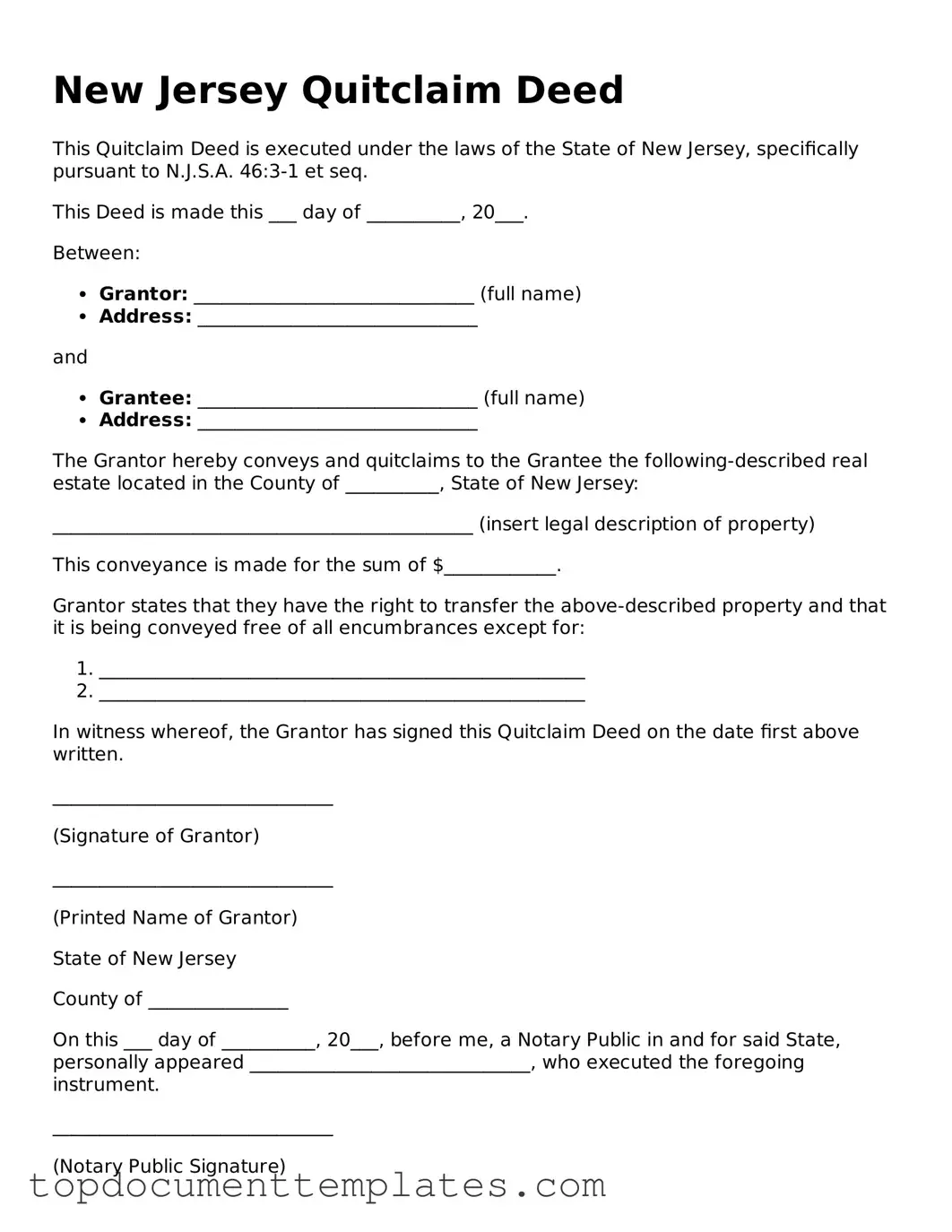In New Jersey, the Quitclaim Deed serves as a vital tool for property transfers, allowing individuals to convey their interest in real estate without making any guarantees about the title. This form is particularly useful in situations where the parties involved have a pre-existing relationship, such as between family members or business partners, and trust that the transfer will be executed without disputes. The Quitclaim Deed does not provide any warranties, which means that the grantor is not responsible for any claims against the property that may arise after the transfer. This form typically includes essential information such as the names of the grantor and grantee, a description of the property, and the date of execution. While it is simpler than other types of deeds, such as warranty deeds, it is crucial for parties to understand the implications of using a Quitclaim Deed, particularly regarding potential risks associated with undisclosed liens or encumbrances. As a result, careful consideration and, if necessary, legal advice are recommended before proceeding with this method of property transfer.
